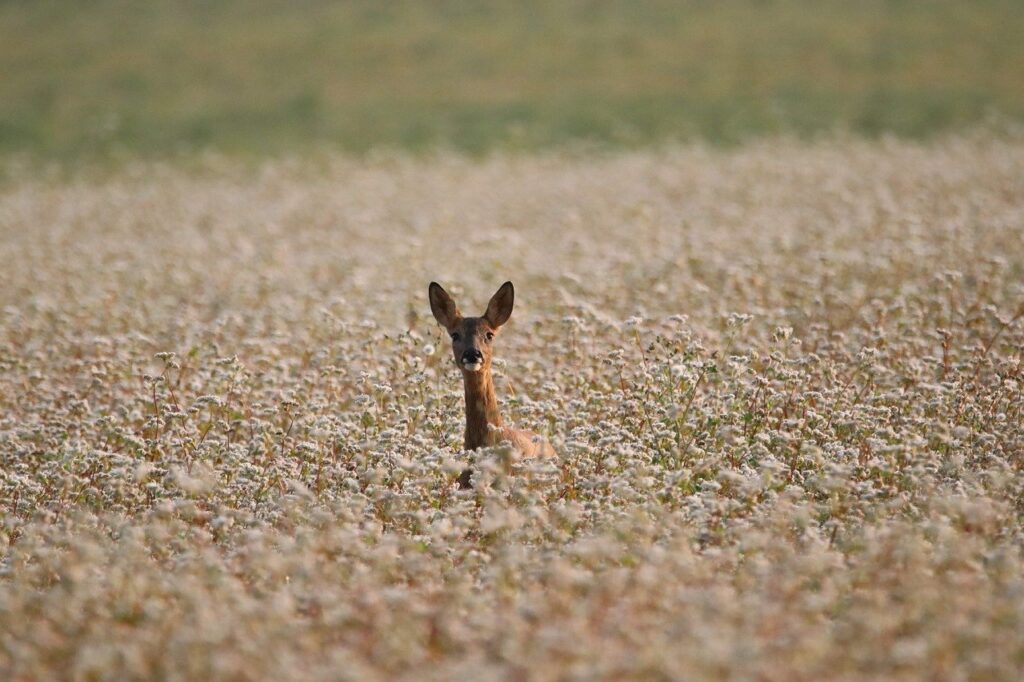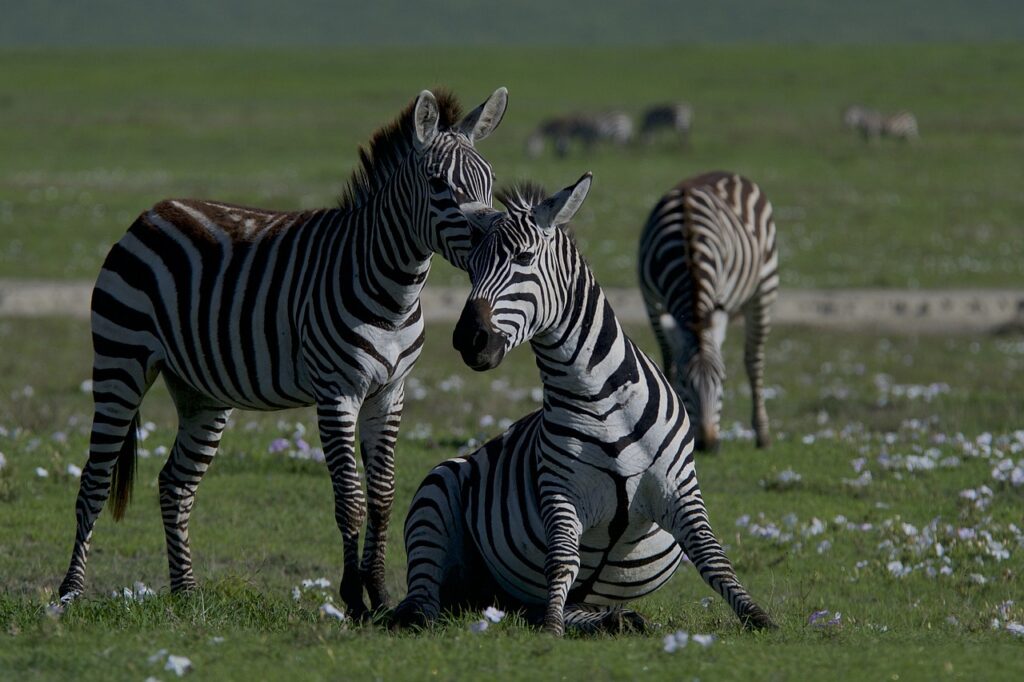In today’s article, we explore the fascinating realms of genetic diversity, species diversity, and ecosystem diversity. These three interrelated concepts play a vital role in shaping the world around us, from the diversity of life forms to the intricate balance of ecosystems. Join us as we unravel the mysteries of these interconnected webs and discover the importance of preserving and safeguarding the diversity that makes our planet so extraordinary.

Genetic Diversity
Definition
Genetic diversity refers to the variation in genetic material within a population, species, or group of species. It encompasses the differences in DNA sequences, genes, and chromosomes that exist both within and between individuals. Genetic diversity is the foundation of biodiversity and is crucial for the survival and adaptability of populations.
Importance
Genetic diversity plays a vital role in the long-term survival and evolutionary success of species. It allows populations to adapt to changing environments, withstand disease outbreaks, and respond to ecological challenges. Higher genetic diversity often leads to increased resilience and improved overall health of populations.
Factors influencing genetic diversity
Several factors influence genetic diversity. These include population size, reproductive strategies, gene flow, mutation rate, and natural selection. In smaller populations, genetic diversity tends to be lower, making them more susceptible to genetic disorders and reduced adaptability. Reproductive strategies, such as inbreeding or outbreeding, can impact the genetic diversity within a population.
Gene flow refers to the movement of genes between populations through migration or dispersal. It helps maintain genetic diversity and prevents the isolation of populations. Mutation rate, the occurrence of genetic mutations, introduces new genetic variation into populations over time. Finally, natural selection acts as a driving force in shaping the genetic diversity of populations by favoring certain genetic traits that offer a selective advantage.
Methods for measuring genetic diversity
Scientists use various methods to measure genetic diversity. One commonly used method is DNA sequencing, which reveals the precise order of nucleotides in a DNA molecule. This information allows researchers to compare and identify genetic variations between individuals or populations. Another method is microsatellite analysis, which examines repetitive DNA sequences and identifies variations in the number of repeated units.
Population genetics, a branch of genetics, employs statistical models and mathematical techniques to study the distribution and changes in genetic diversity within and between populations. These methods aid in the identification of genetic markers, which are specific regions of DNA that show high variability and can be used to assess genetic diversity.

Species Diversity
Definition
Species diversity refers to the variety of species present in a particular area or ecosystem. It encompasses both the number of species and their relative abundance. A diverse ecosystem is characterized by a wide range of species, each having its own unique role and contribution.
Importance
Species diversity is essential for ecosystem stability and functioning. Each species plays a specific role in maintaining the balance of an ecosystem, whether as a predator, prey, pollinator, or decomposer. Loss of species diversity can disrupt these intricate relationships and threaten the overall health of the ecosystem.
Types of species diversity
There are three main types of species diversity: alpha diversity, beta diversity, and gamma diversity. Alpha diversity refers to the number of species within a specific habitat or location. It reflects the local diversity and richness of species. Beta diversity, on the other hand, measures the turnover of species between different habitats or ecosystems. It indicates the rate of change or turnover in species composition.
Gamma diversity represents the overall diversity across a large geographic area or region. It takes into account the diversity of species within each habitat as well as the differences between habitats. These different measures of species diversity provide a comprehensive understanding of the distribution and variation of species.
Measuring species diversity
Scientists employ various quantitative measures to assess species diversity. One commonly used metric is species richness, which simply counts the number of different species within a given area. Another measure is species evenness, which considers the relative abundance of each species in relation to others.
Species diversity indices, such as the Shannon index or Simpson’s diversity index, provide a more comprehensive measure by taking into account both species richness and evenness. These indices assign greater weight to rare or abundant species, allowing for a more accurate representation of species diversity.
Threats to species diversity
Species diversity is currently facing numerous threats, primarily as a result of human activities. Habitat destruction through deforestation, urbanization, and land conversion is one of the leading causes of species loss. Pollution, climate change, invasive species, overexploitation, and the illegal wildlife trade are also significant contributors to the decline in species diversity.
Conservation efforts
To address the threats to species diversity, various conservation efforts and strategies have been implemented. Protected areas, such as national parks and reserves, help safeguard habitats and provide safe havens for endangered species. Habitat restoration projects aim to rehabilitate degraded ecosystems and create suitable conditions for species recovery.
Conservation breeding programs and reintroduction initiatives help revive populations of rare or endangered species. These programs often involve captive breeding and subsequent release into the wild. Additionally, public education and awareness campaigns play a crucial role in promoting conservation practices and fostering a sense of responsibility towards species diversity.

Ecosystem Diversity
Definition
Ecosystem diversity refers to the variety of ecosystems present in a particular geographical area or on a global scale. It encompasses the different habitats, communities, and ecological processes that collectively form the tapestry of life on Earth.
Importance
Ecosystem diversity plays a crucial role in maintaining the balance and functionality of the natural world. Each ecosystem provides unique services and resources, such as water purification, climate regulation, soil fertility, and habitat for numerous species. The interconnectedness and interdependence of ecosystems ensure the sustainability of our planet’s essential processes.
Types of ecosystems
There are several types of ecosystems, including forests, grasslands, wetlands, deserts, tundra, marine ecosystems, freshwater ecosystems, and more. Each ecosystem possesses its own distinct set of biotic and abiotic components, contributing to the overall diversity of life on Earth.
Interactions within ecosystems
Ecosystems are characterized by intricate interactions between living organisms (biotic factors) and their physical environment (abiotic factors). These interactions include predation, competition for resources, symbiotic relationships, nutrient cycling, and energy flow. They form the basis of ecological processes and shape the structure and function of ecosystems.
Measuring ecosystem diversity
Evaluating ecosystem diversity is challenging due to the complexity and scale of ecological systems. Scientists use a combination of methods, including remote sensing techniques, biodiversity surveys, and ecological modeling, to assess ecosystem diversity. Remote sensing allows for the monitoring and mapping of different land cover types, providing insights into the distribution of ecosystems.
Biodiversity surveys involve field data collection, including visual observations, species identification, and ecological sampling. These surveys provide valuable information about species composition, abundance, and distribution. Ecological models simulate and predict ecosystem dynamics, helping to understand the relationships between different components and their responses to changes.
Threats to ecosystem diversity
Ecosystem diversity is threatened by various factors, most notably habitat loss and fragmentation. Human activities, such as agriculture, deforestation, infrastructure development, and pollution, continue to degrade and destroy natural habitats, resulting in the loss of countless species and disruption of ecosystem processes.
Climate change poses an additional significant threat, impacting ecosystems through rising temperatures, altered precipitation patterns, and extreme weather events. Invasive species, overexploitation of resources, and the degradation of water bodies further contribute to the decline in ecosystem diversity.
Conservation strategies
Conserving ecosystem diversity requires a holistic approach that addresses the root causes of the threats. Protection and restoration of habitats are fundamental strategies to safeguard ecosystems. This includes the establishment of protected areas, land-use planning, and sustainable resource management practices.
Promoting sustainable development practices, reducing greenhouse gas emissions, and adopting renewable energy sources are essential in mitigating the impacts of climate change on ecosystems. Invasive species management and responsible conservation of natural resources, such as fisheries and forests, are also crucial in preserving ecosystem diversity.
Education and public awareness play a vital role in fostering a sense of stewardship and promoting sustainable practices. By understanding and appreciating the value of ecosystem diversity, we can work together to ensure the long-term health and resilience of our planet’s ecosystems.




